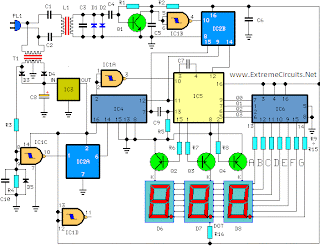Most drivers would have experienced the frustrations at some time or another of parking their car for the day and coming back in the evening only to find that they have accidentally left the head lights on. The result,with the modem small car batteries, quite often is that they have discharged the battery too much to start the engine. And at the end of a long day, the last thing one wants to cope with is a flat and discharged battery.
The basic objective of this low cost monitor is to prevent such (mis) happening from taking place. The circuit sounds an audible alarm as well as flashes a bicolour LED display array at the moment the driver,leaving the headlight on,open his door to leave the car. The alarm does not irritatingly sound every time a co-passenger opens a door. The circuit uses a single CMOS quad NAND gate chip,the ubiquitous 4093.
G1 is wired as a low frequency oscillator which flashes at around 1 Hz. For generating the AC current two 820 ohm resistors have been used rather than the conventional gate.G2 is wired as an AFO which generates the master alarm tone. G3 and G4 are used as buffers which drive the piezo element through the coupling capacitor C3.This piezo speaker has been used in place of normally used buzzers due to its advantages of lower height,lower cost as well as lower current demand.
The circuit of headlights on indicator
Diodes D1 and D2 ensure proper operation of the circuit by allowing the alarm to be actived only when the drivers door is opened.The circuit draws negligible current in quienscent state.


















